| HOME |
|---|


Jupiter and Thetis - Jean Auguste Dominque Ingres - 1811
| HOME |
|---|


Jupiter was king of the gods. The ancient Greeks called him Zeus. The Romans originally referred to him as Father Zeus - in Latin: Zeus Pater, which over time came to be pronounced Ju-piter. To early Anglos he was known as Jove. He ruled the sky, while his brother Poseidon (Neptune) ruled the seas, and his other brother Hades (Pluto) ruled the underworld.
Jupiter was the son of Saturn, who was king of the gods before him, and in the habit of swallowing his offspring to prevent them from usurping him. But Jupiter's mother, Rhea, hid him from Saturn, and took him into the wilderness where he was raised by nymphs. When he was grown he confronted Saturn and defeated him, taking over his throne, high among the clouds on Mount Olympus.
Jupiter had a voracious sexual appetite. Although married to his sister, Juno (Hera), he was constantly seducing both goddesses and mortals, often changing his form to hide his actions from his wife. He appeared to Europa as a bull, Leda as a swan, Leto as a partridge, Danae as a shower of gold, and Alcmene as her own husband. Women were powerless to refuse him.
Like the god it was named for, the planet Jupiter is truly king of the planets, ruling the solar system from its throne high in the heavens, more than five times further from the Sun than Earth. With a diameter of 89,424 miles (143,884 kms), it is the largest of the planets, having a volume over 1,300 times greater than Earth. Outside the vast debris field of the Asteroid Belt, Jupiter is the first of the giant gas planets that reside in the outer solar system.
In many ways, Jupiter is a failed star. It is composed of hydrogen and helium, as all stars are, including our Sun. Jupiter just never got quite big enough to ignite. Still, it generates significantly more heat within itself than it receives from the Sun, and its deep gravity well influences the entire solar system. Jupiter does, in fact, command a mini solar system all its own, with no less than 67 moons in orbit around it, one of which, Ganymede, is larger than the planet Mercury.
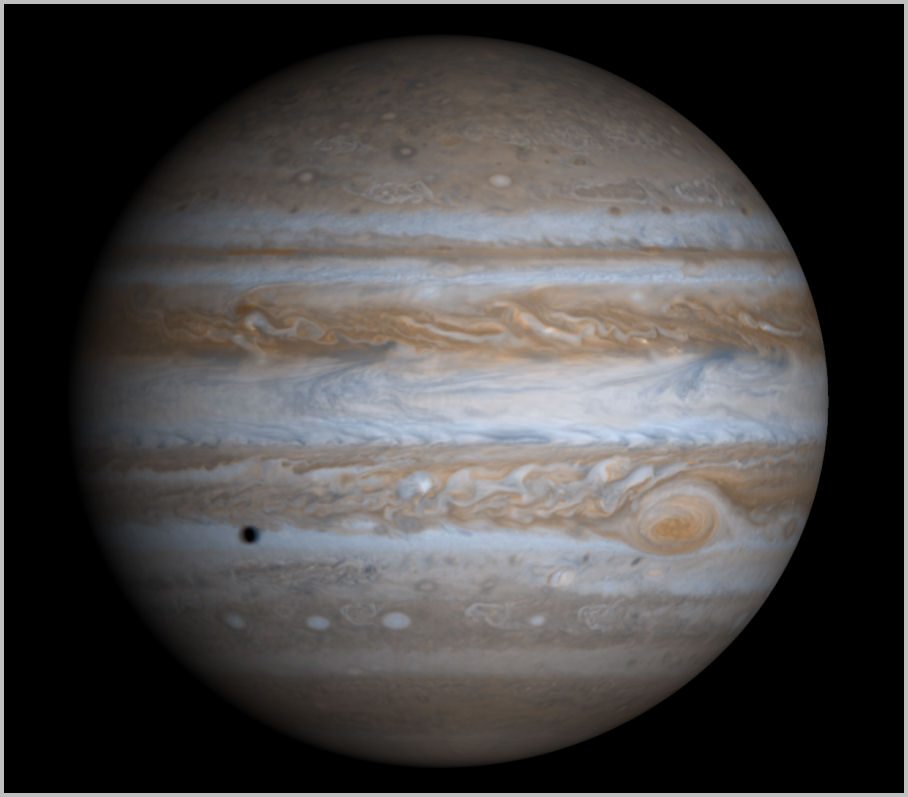
Despite its large size, Jupiter completes one full rotation about its axis in only 9.925 hours. This fast rotation generates a very strong magnetic field that extends billions of miles into space. The magnetic field in turn ionizes Jupiter's atmosphere, creating the most deadly radiation environment - for man and machine - of all the planets. Jupiter takes almost twelve Earth years to orbit the Sun.
Jupiter is a favorite object for backyard telescopes. On a clear night when the "seeing" is good, bands of multicolored clouds girdling the planet are visible. And with a little patience, and at least an eight inch telescope, Jupiter's Great Red Spot can be seen. The Great Red Spot is an immense storm - the largest storm in the solar system, twice as wide as our entire planet Earth - that lifts material from deep within Jupiter's turbulent atmosphere to a height of eight kilometers above the surrounding clouds.
In the year 2000, three small storms collided and merged into a large white spot, about half the size of the famous Great Red Spot. It was named Oval BA. By April, 2006, the spot had turned red, the same color as its older sibling, and became the Little Red Spot.
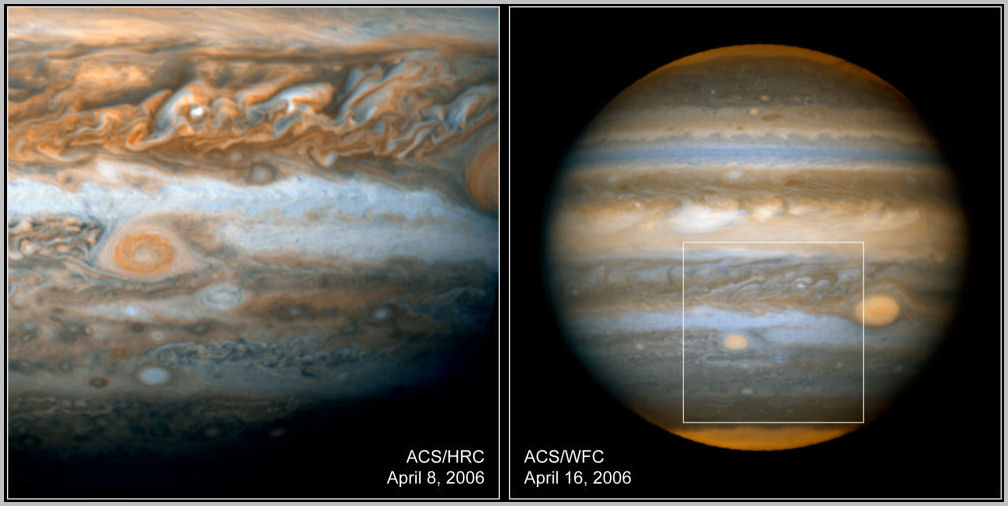
As of this writing Jupiter has 67 known moons. Eight of these moons orbit relatively close to the planet in nearly circular orbits and are known as regular satellites, while the other 59 moons are generally much smaller, orbit relatively far from the planet in steeply inclined, eccentric orbits, and are known as irregular satellites.
At a mean distance of 79,806 miles (127,690 kms), and an average diameter of 28 miles (45 kms), the innermost moon of Jupiter is Metis, named after Jupiter's first wife. It takes only 7 hours, 4 minutes to complete one orbit of Jupiter.
Only slightly farther out at 80,431 miles (128,690 kms), with a much smaller diameter of 11 miles (17 kms), is Adrastea, named for one of the nymphs who raised Jupiter. It takes 7 hours, nine minutes to orbit the planet.

Next in line at 113,354 miles (181,366 kms), and 109 miles (174 kms) in diameter is Amalthea, named for another of the nymphs that tended Jupiter. It is the largest of the four inner moons and takes 11 hours, 57 minutes to orbit Jupiter.
The outermost of the inner moons orbits at 138,680 miles (221,889 kms), and has a diameter of 63 miles (100 kms). It is named Thebe, for one of Jupiter's consort nymphs. Thebe takes 16 hours, 11 minutes to complete one orbit.
The next four moons out from Jupiter are much bigger and more significant than all the others. One of them at least may even harbour life. They are the Galilean Satellites, named for the man who discovered them over 400 years ago, Galileo Galilei:
On the 7th day of January in the present year, 1610, in the first hour of the following night, when I was viewing the constellations of the heavens through a telescope, the planet Jupiter presented itself to my view, and as I had prepared for myself a very excellent instrument, I noticed a circumstance which I had never been able to notice before, namely that three little stars, small but very bright, were near the planet...
It was the first time human eyes had ever seen the moons of Jupiter. Of course Galileo didn't know they were moons, at least not right away. In 1610, the official law of the governing church was that Earth was the centre of the universe, and everything else in the universe moved around us. But Galileo noticed that these tiny pin-pricks of light beside Jupiter changed positions from night to night, quite unlike all the other stars. One can only imagine the thrill Galileo felt when his genius ultimately led him to the conclusion that the tiny stars were in fact not revolving around Earth as they were supposed to, but revolving around the planet Jupiter. It was the first visual proof that Earth was not the centre of the universe.
Now, even the smallest of modern telescopes reveals these moons, allowing anyone to relive Galileo's thrill of seeing them, and discovering them for the first time.
With a diameter of 1,942 miles (3,636 km), and orbiting at a distance of 220,000 miles (422,000 km), the closest Galilean moon to Jupiter is Io (eye-oh), named for one of the god's many mortal consorts. Poor tortured Io is torn between the gravity of Jupiter and the opposing pull of the other large moons. These intense tidal forces cause Io's solid surface to bulge in and out more than 330 feet (100 metres), creating enormous heat in the moon's interior, which when coupled with the effects of Jupiter's intense radiation, has resulted in Io being the most volcanically active body in the solar system, with dozens of mammoth volcanos covering the moon with fresh lava flows, and spewing plumes of volcanic gases hundreds of miles high into space. Io completes one orbit around Jupiter every 1.8 days.
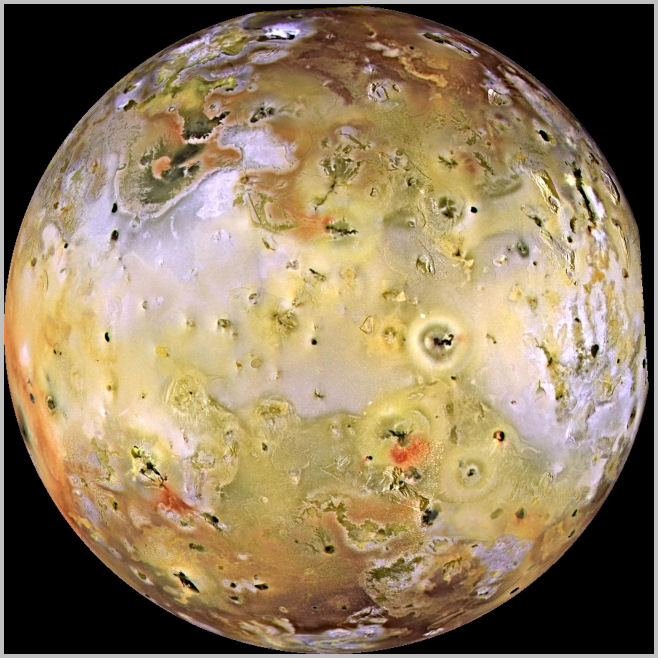
At a distance of 420,000 miles (670,900 km), the next closest moon is Europa, named for another one of Jupiter's conquests. With a diameter of 1,945 miles, it is the only Galilean moon that is smaller than Earth's Moon, which has a diameter of 2,160 miles. Europa orbits Jupiter every 3.5 days.
The 1968 classic film, 2001: A Space Odyssey, as well as the 1985 sequel, 2010: Odyssey Two, both proposed that primitive life forms were evolving in warm oceans sealed beneath the frozen crust of the Jovian moon Europa, a proposition that could very well be true. Europa's smooth uncratered surface suggests that warm non-volcanic liquids from the interior of the moon are leaking onto the surface and freezing.
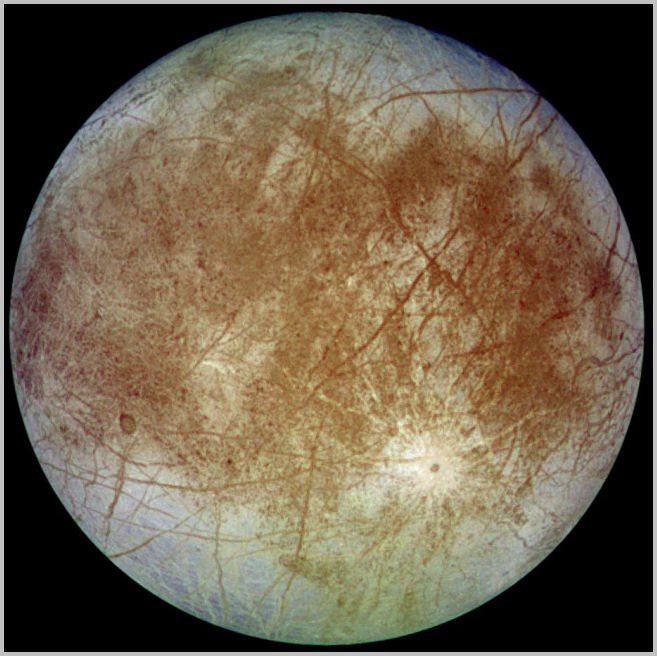
With a diameter of 3,274 miles (5,268 kms), Ganymede is not only the largest Galilean moon, it is the largest moon in the entire solar system. It is even larger than the planet Mercury. Orbiting Jupiter at a distance of 668,750 miles (1,070,00 kms), it is much further from the planet's damaging radiation and tidal forces than Io and Europa. Ganymede takes just over 7 days to complete one orbit.
In mythology, Ganymede was a prince of Troy, famed for his beauty. Eos, goddess of the dawn, abducted him and brought him to Olympus, where he became Jupiter's cup-bearer. When Jupiter's wife, Juno (Hera), became jealous of his beauty, Jupiter placed him in the stars to keep him safe, where he became known as the constellation Aquarius.
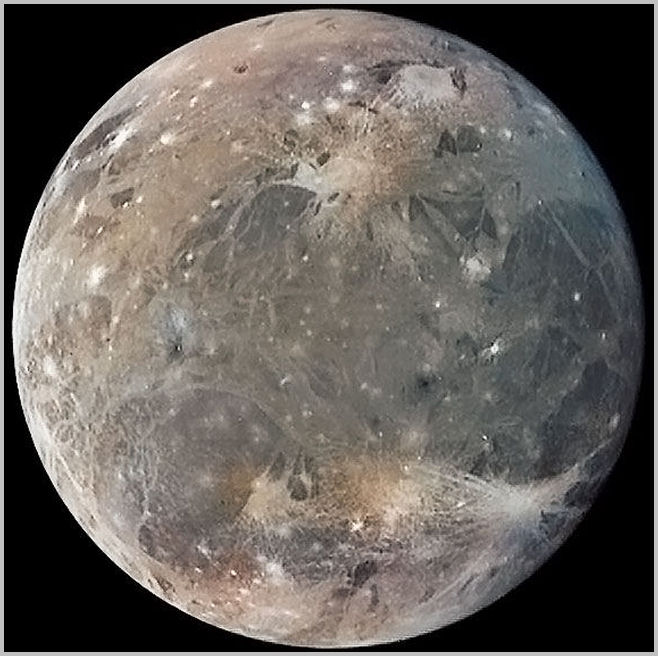
Callisto is the farthest of the Galilean moons from Jupiter, orbiting at a nice safe distance of 1,176,875 miles (1,883,000 kms). With a diameter of 2,987 miles (4,806 kms), it is the third largest moon in the solar system, behind Ganymede and Saturn's moon, Titan. It is almost exactly the same size as the planet Mercury, and like Mercury, heavily cratered. It is considered to have the oldest, most heavily cratered surface in the solar system. Callisto takes 16.7 days to complete one orbit around Jupiter.
Callisto is named for yet another of Jupiter's sexual conquests among mortal females. When Jupiter's wife discovered their tryst, she turned Callisto into a bear, and caused her to be killed by the huntress Diana. But Jupiter resurrected his lover and placed her in the stars, as the constellation Ursa Major, The Great Bear.
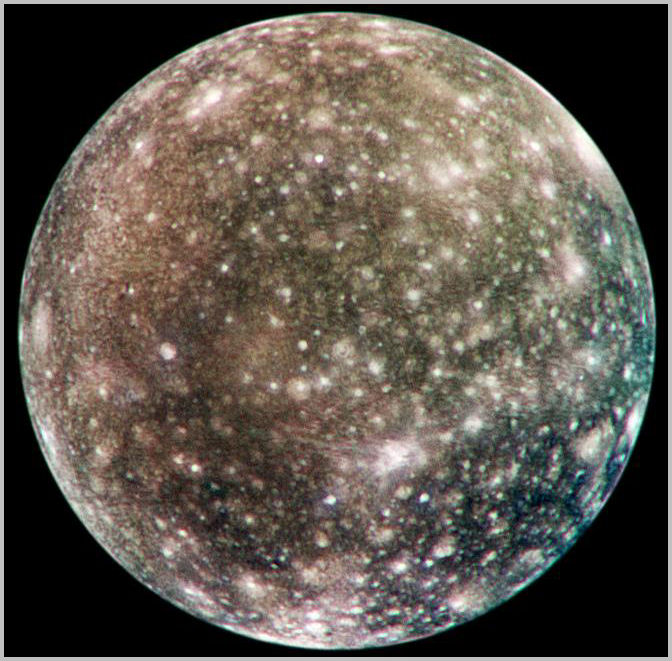
In the image below, the Hubble Space Telescope captures a rare simultaneous transit of three Galilean Satellites. Europa is just beginning its transit in the lower left corner of the image, its small shadow moving just ahead of it. Above Europa is the larger moon Callisto, appearing larger still because it's 700,000 miles closer to the camera, its large shadow being pushed far ahead of it. Up in the top right corner is Io, just finishing its transit, and producing no shadow.
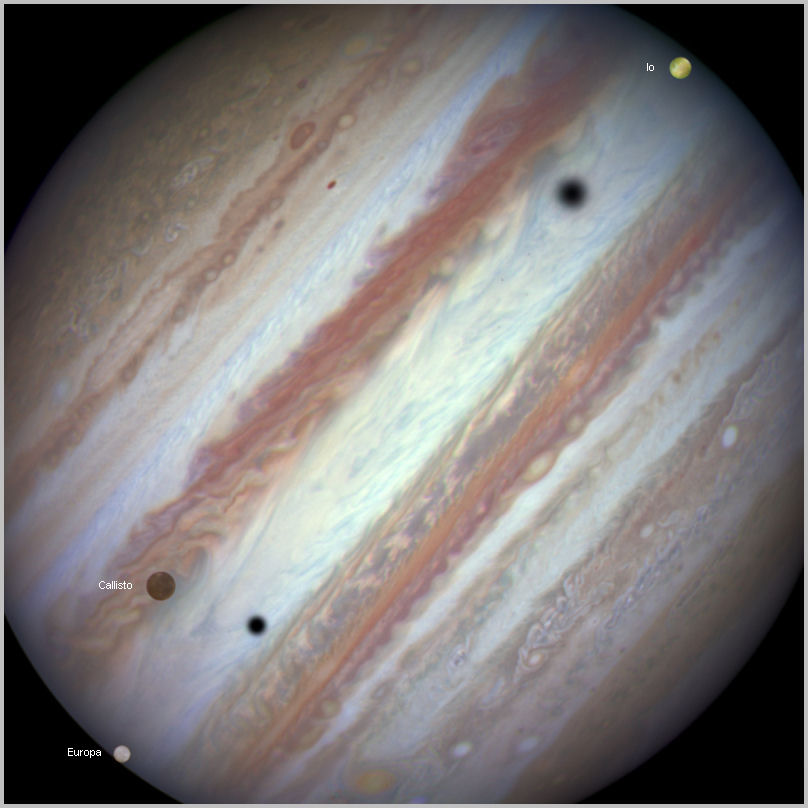
The next seven of Jupiter's moons are small and much farther away, orbiting at distances of 4 to 11 million miles (7 to 17 million kms). They all orbit in the same direction as the closer eight moons.
The remaining 52 of Jupiter's moons are even smaller and farther away, orbiting at distances of 11 to 19 million miles (17 to 30 million kms). All of these tiny, distant moons orbit in the opposite, retrograde direction of all the other, closer moons.
On March 4, 1979, as NASA's Voyager 1 spacecraft flew past Jupiter on its way to Saturn and beyond, it made an exciting discovery. It seemed that Saturn was not the only planet in the solar system with rings. Voyager discovered that Jupiter too, had a ring system, albeit nowhere near as large or impressive as the great rings of Saturn.
When NASA's Galileo spacecraft visited Jupiter seventeen years later, it took photos of the rings. The image below was captured as Galileo swung behind the giant planet into its shadow. The Sun, hidden behind Jupiter, back-lit the rings in a stunning display.
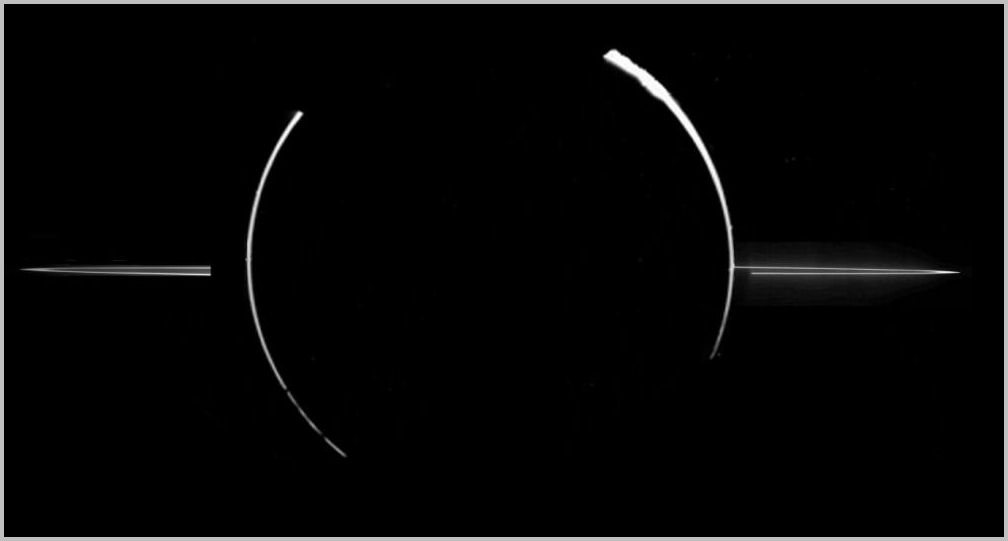
In the spring of 2012, we were treated to the semi rare appearance of Jupiter, Venus, and the crescent Moon all together in the evening sky. In the image below, captured March 24, Jupiter is sandwiched between Venus above, and the crescent Moon (with Earthshine) below.
|
|
|
| SOL | MERCURY | VENUS | EARTH | METEORS | MOON | MARS | ASTEROIDS | JUPITER | SATURN | URANUS | NEPTUNE | PLUTO | COMETS |
|
|
|